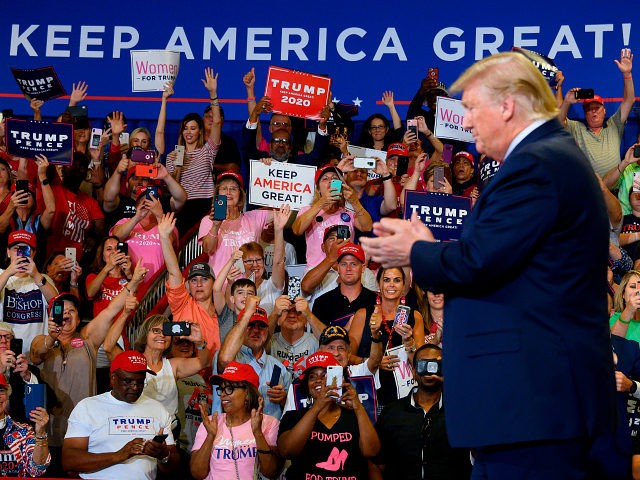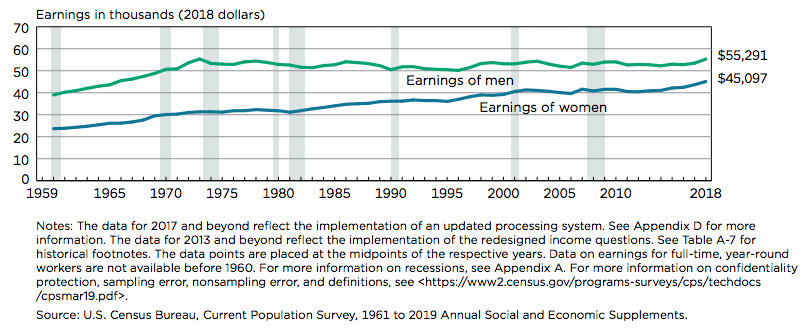President Donald Trump can claim credit for pushing poverty among black American adults to record lows, according to data in the U.S. Census Bureau’s 2018 economic report.
The good news is hidden deep in the 77-page report, Income and Poverty in the United States: 2018, which was released Tuesday, September 10.
Table B5 on page 65 shows that poverty among married black families dropped to 18.8 percent, down from 20.2 percent in 2015 and 23.8 percent in 2007, which was the peak of the housing boom and bubble inflated by Congress and President George W. Bush’s terms.
Poverty among black female-headed families also dropped to 31.7 percent, down from 35.7 percent in 2015 and 39.7 percent in 2007.
Poverty among all black Americans dropped to 20.8 percent, down from 24.1 percent in 2015 and 24.5 percent in 2007
For comparison, black poverty is still somewhat higher than the poverty rate for all Americans, which is at 11.8 percent, and at 9.7 percent for all intact families and 26.8 percent for female-headed households.
The report does not suggest why the poverty rate is falling. But other data — including comments from industry CEOs — show that wages are gently rising as employers reluctantly begin to compete for employees in a low-immigration, tight labor economy.
Trump’s unprecedented combination of “Hire American” and economic growth policies is helping create those wage gains nationwide.
The growth policies pressure companies to hire more workers.
The “Hire American” policy suppresses the inflow of legal and illegal migrants and also blocks demands from businesses for special infusions of cheap foreign labor, such as extra refugees, asylum-seekers, visa workers, and legal immigrants.
Trump’s low-immigration policies have prompted many progressives and Democrats to claim he is racist. But his growth and “Hire American” combination is pressuring companies to compete for Americans workers — including blacks and Latinos — by offering higher wages and better benefits.
One expected impact of the shortage is a growing number of non-white Americans who are being hired and are getting wage increases. The Washington Post reported September 9:
Economists say the minority hiring boom is explained mainly by a tight labor market that is forcing employers to look beyond their normal pool of candidates …
“Now there are more job opportunities, I think. I look for jobs that want English and Spanish speakers,” said [Milagros] Tasayco, who spends her mornings at the community center and her afternoons at a private day care. “My children say, ‘Wow, Mommy, you have two jobs!’ My husband is proud, too.”
The Census Bureau said men who work full time and year-round got an average earnings boost of 3.4 percent in 2018, pushing their median salaries up to $55,291, a 3.4 percent gain after adjusting for inflation. Women gained 3.3 percent in wages, to bring their median salaries to $45,097 for full time, year-round work.
Trump’s wage gains may mark a historic shift in the nation’s economy.
This growth is already visible as a rising line at the end of a Census Bureau chart, which shows the flat-lined wages between 1973 and 2018. The flat wages followed 25 years of rapid wage growth in a low-immigration economy between 1959 and 1973,
Immigration Numbers:
Each year, roughly four million young Americans join the workforce after graduating from high school or university. This total includes about 800,000 Americans who graduate with skilled degrees in business or health care, engineering or science, software, or statistics.
But the federal government then imports about 1.1 million legal immigrants and refreshes a resident population of about 1.5 million white-collar visa workers — including approximately one million H-1B workers and spouses — and about 500,000 blue-collar visa workers.
The government also prints out more than one million work permits for foreigners, it tolerates about eight million illegal workers, and it does not punish companies for employing the hundreds of thousands of illegal migrants who sneak across the border or overstay their legal visas each year.
This policy of inflating the labor supply boosts economic growth for investors because it transfers wages to investors and ensures that employers do not have to compete for American workers by offering higher wages and better working conditions.
This policy of flooding the market with cheap, foreign, white-collar graduates and blue-collar labor also shifts enormous wealth from young employees towards older investors, even as it also widens wealth gaps, reduces high-tech investment, increases state and local tax burdens, reduces marriage rates, and hurts children’s schools and college educations.
The cheap-labor economic strategy also pushes Americans away from high-tech careers and sidelines millions of marginalized Americans, including many who are now struggling with fentanyl addictions.
The labor policy also moves business investment and wealth from the Heartland to the coastal cities, explodes rents and housing costs, undermines suburbia, shrivels real estate values in the Midwest, and rewards investors for creating low-tech, labor-intensive workplaces.


COMMENTS
Please let us know if you're having issues with commenting.